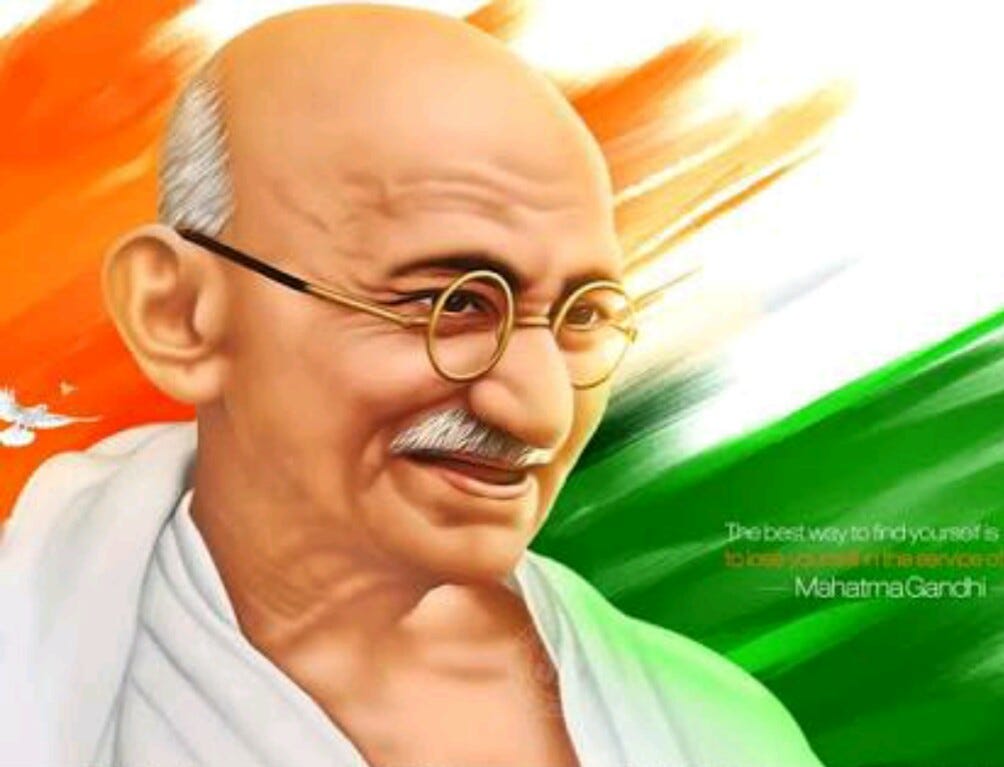Narendra modi biography facts
Prime Minister Narendra Modi Biography: Get to Know Narendra Modi’s AGE, Full Name, about his Family, Salary, Date of Birth, Qualification and age.
What’s the Prime Minister Narendra Modi Age ?
AGE ; 72 YEARS
Narendra Damodardas Modi was born on 17 September 1950 to a Gujarati Hindu family of grocers in Vadnagar, Mehsana district, Bombay State (present-day Gujarat)
Narendra Modi: A Journey from Humble Beginnings to Prime Ministerial Leadership
Narendra Damodardas Modi, the 14th and current Prime Minister of India, has ascended from modest origins to become a prominent figure on the global political stage. Born on September 17, 1950, in Vadnagar, Gujarat, Modi grew up in a small northern Gujarat town. His parents, owners of a modest grocery store, instilled in him values of determination and hard work.
Education and Early Involvement in Politics
{What is the qualification of PM in India?}
Modi pursued his education with dedication and received his M.A. in political science from Gujarat University in Ahmedabad. Early in the 1970s, he became associated with the Rashtriya Swayamsevak Sangh (RSS), a pro-Hindu organization, and established a local chapter of the Akhil Bharatiya Vidyarthi Parishad (ABVP), the RSS’s student wing. This marked the beginning of his political journey.
Rise within the RSS and BJP [PRIME prime minister OF INDIA }
Modi’s affiliation with the RSS proved instrumental in shaping his political career. He joined the Bharatiya Janata Party (BJP) in 1987, quickly rising through the ranks. In 1995, he assumed the role of the BJP’s national organization secretary, followed by a promotion to general secretary in 1998.

Political Achievements and Controversies
Modi’s political journey was marked by both achievements and controversies. He played a pivotal role in expanding the BJP’s influence in Gujarat, leading to the party’s victory in the 1995 state legislative assembly elections. This triumph paved the way for the BJP to form the first-ever BJP-controlled government in India.
However, Modi faced intense scrutiny for his handling of the 2002 riots that shook Gujarat. Accusations of inaction and complicity marred his reputation during that period. Despite this, he continued to rise within the BJP, achieving multiple victories in state assembly elections.
Economic Growth and Leadership
As the Chief Minister of Gujarat from 2001 to 2014, Modi left an indelible mark on the state’s economy. He championed policies that fostered growth and development, contributing to the state’s remarkable economic progress. This success further propelled his standing within the BJP and positioned him as a potential prime ministerial candidate.
PatOMG2 film Review : OMG2 MOVIE STORY, Budget , Collectionh to Prime Ministership
Modi’s leadership within the party, coupled with his impressive electoral successes, culminated in his appointment as the Prime Minister of India in 2014. His tenure has been marked by a mix of national and international initiatives, aiming for economic development, diplomatic engagement, and social reforms.
Prime Minister Narendra Modi Major Decisions and Schemes
Following are the areas in which Narendra Modi has done some or other types of Major work:
- 2016 Indian banknote demonetisation
- 2020 Indian agriculture acts
- Accessible India Campaign
- Arunachal Frontier Highway
- Aspirational Districts Programme
- Atal Bhujal Yojana
- Atal Mission for Rejuvenation and Urban Transformation
- Atal Pension Yojana
- Atmanirbhar Bharat
- Banks Board Bureau
- Beti Bachao Beti Padhao
- Bharat Parv
- Bharatmala
- BHIM
- Central Organisation for Railway Electrification
- Char Dham Highway
- Char Dham Railway
- DD Kisan
- Deen Dayal Upadhyaya Antyodaya Yojana
- Deen Dayal Upadhyaya Gram Jyoti Yojana
- Deendayal Disabled Rehabilitation Scheme
- Delhi–Ahmedabad high-speed rail corridor
- Delhi–Kathmandu Bus
- Chennai–Mysuru high-speed rail corridor
- Delhi–Varanasi high-speed rail corridor
- DigiLocker
- E-NAM
- EPathshala
- Expenditure Management Commission
- Digital India
- DRDO Young Scientist Laboratories
- FASTag
- Fit India Movement
- Forum for India–Pacific Islands Cooperation
- Garib Kalyan Rojgar Abhiyaan
- Give up LPG subsidy
- Good Governance Day
- Government e Marketplace
- Gramin Bhandaran Yojana
- Har Ghar Jal
- Haryana Orbital Rail Corridor
- Heritage City Development and Augmentation Yojana
- Indian 200-rupee note
- Pradhan Mantri Matri Vandana Yojana
- JAM Yojana
- Jeevan Pramaan
- Know India Programme
- Krishi Unnati Mela
- Mahatma Gandhi Pravasi Suraksha Yojana
- Make in India
- Mann Ki Baat
- Mega Food Parks
- Micro Units Development and Refinance Agency Bank
- Mumbai–Ahmedabad high-speed rail corridor
- Mumbai–Hyderabad high-speed rail corridor
- MyGov.in
- National Common Mobility Card
- National Council for Transgender Persons
- National Infrastructure Pipeline
- National Institutional Ranking Framework
- National Unity Day (India)
- Netcare System
- NITI Aayog
- Pariksha Pe Charcha
- PM CARES Fund
- PM Gati Shakti
- PM Kusum Scheme
- Police Mitra scheme
- Post Office Passport Seva Kendra
- Pradhan Mantri Awas Yojana
- Pradhan Mantri Bharatiya Janaushadhi Pariyojana
- Pradhan Mantri Garib Kalyan Anna Yojana
- Pradhan Mantri Garib Kalyan Yojana
- Pradhan Mantri Jan Dhan Yojana
- Pradhan Mantri Jeevan Jyoti Bima Yojana
- Pradhan Mantri Kaushal Vikas Yojana
- Pradhan Mantri Kisan Samman Nidhi
- Pradhan Mantri Krishi Sinchai Yojana
- Saubhagya scheme
- Pradhan Mantri Shram Yogi Mandhan
- Pradhan Mantri Suraksha Bima Yojana
- Pradhan Mantri Ujjwala Yojana
- Sagar Mala project
- Sandes (software)
- Sansad Adarsh Gram Yojana
- Saurashtra Narmada Avtaran Irrigation
- Security and Growth for All in the Region
- Setu Bharatam
- Shramew Jayate Yojana
- Smart Cities Mission
- Smart Village India
- Social Endeavor for Health and Telemedicine
- Soil Health Card Scheme
- South Asia Satellite
- Startup India
SOCIAL MEDIA HANDLE ; https://www.instagram.com/narendramodi/?hl=en
Narendra Modi: A Journey from Humble Beginnings to Prime Ministerial Leadership
Narendra Damodardas Modi, the 14th and current Prime Minister of India, has ascended from modest origins to become a prominent figure on the global political stage. Born on September 17, 1950, in Vadnagar, Gujarat, Modi grew up in a small northern Gujarat town. His parents, owners of a modest grocery store, instilled in him values of determination and hard work.
Education and Early Involvement in Politics
Modi pursued his education with dedication and received his M.A. in political science from Gujarat University in Ahmedabad. Early in the 1970s, he became associated with the Rashtriya Swayamsevak Sangh (RSS), a pro-Hindu organization, and established a local chapter of the Akhil Bharatiya Vidyarthi Parishad (ABVP), the RSS’s student wing. This marked the beginning of his political journey.
Rise within the RSS and BJP
Modi’s affiliation with the RSS proved instrumental in shaping his political career. He joined the Bharatiya Janata Party (BJP) in 1987, quickly rising through the ranks. In 1995, he assumed the role of the BJP’s national organization secretary, followed by a promotion to general secretary in 1998.
Political Achievements and Controversies
Modi’s political journey was marked by both achievements and controversies. He played a pivotal role in expanding the BJP’s influence in Gujarat, leading to the party’s victory in the 1995 state legislative assembly elections. This triumph paved the way for the BJP to form the first-ever BJP-controlled government in India.
However, Modi faced intense scrutiny for his handling of the 2002 riots that shook Gujarat. Accusations of inaction and complicity marred his reputation during that period. Despite this, he continued to rise within the BJP, achieving multiple victories in state assembly elections.
Economic Growth and Leadership
As the Chief Minister of Gujarat from 2001 to 2014, Modi left an indelible mark on the state’s economy. He championed policies that fostered growth and development, contributing to the state’s remarkable economic progress. This success further propelled his standing within the BJP and positioned him as a potential prime ministerial candidate.
Path to Prime Ministership
Modi’s leadership within the party, coupled with his impressive electoral successes, culminated in his appointment as the Prime Minister of India in 2014. His tenure has been marked by a mix of national and international initiatives, aiming for economic development, diplomatic engagement, and social reforms.
Narendra Modi’s Diplomatic Endeavors: Strengthening Global Relations
Narendra Modi, as the Prime Minister of India, has embarked on numerous international tours with the aim of fostering stronger ties, expanding partnerships, and promoting India’s global influence. These efforts underline India’s commitment to fostering diplomatic relationships across the world. Here’s a snapshot of his impactful international visits:
African Tour: Enhancing Cooperation
In July 2016, Modi’s four-nation African tour took him to Mozambique, South Africa, Tanzania, and Kenya. This venture focused on bolstering trade, energy, defense, and maritime collaboration with these African nations.
Mexico: Bridging the Gap
In June 2016, Modi’s visit to Mexico marked a pivotal moment in bilateral relations, with it being the first prime-ministerial visit in three decades. The trip aimed to rejuvenate cooperation and strengthen ties.
United States: Strengthening Ties
Also in June 2016, Modi visited the US, aiming to deepen collaboration between the two countries. His discussions with American leadership centered on various shared interests.
Qatar: Building Trade Relations
Modi’s engagement with Qatar’s business leaders in June 2016 aimed at reinforcing industrial and trade relations between the two nations.
Switzerland: Strengthening Ties and Support for NSG
During the same month, Modi’s bilateral meeting with Switzerland President Johann Schneider Ammann boosted India’s bid for NSG membership. This visit also aimed at deepening trade relations.
Afghanistan: Inaugurating Friendship Dam
In June 2016, Modi’s visit to Afghanistan saw the joint inauguration of the Afghan-India Friendship Dam, highlighting the nations’ strong bond.
Iran: Sealing the Chahbahar Agreement
In May 2016, Modi’s visit to Iran emphasized trade, investments, energy partnership, connectivity, and cultural relations. The historic Chahbahar Agreement was a significant outcome.
Saudi Arabia: Fortifying Relations
Modi’s April 2016 visit to Saudi Arabia aimed at strengthening bilateral relations and enhancing economic ties between the two countries.
Russia: Annual Summit and Agreements
In December 2015, Modi’s visit to Russia for the 16th Annual India-Russia summit resulted in numerous significant agreements, deepening the ties between the two nations.
Singapore: Celebrating Milestones
In November 2015, Modi’s visit to Singapore marked fifty years of India-Singapore relations. It also included discussions with investors to promote India’s ‘Make in India’ initiative.
Malaysia: ASEAN-India Summit and Bilateral Meetings
Also in November 2015, Modi attended the ASEAN-India Summit in Malaysia. He held discussions with various leaders, including counterparts from Malaysia, China, and Japan.
UK: Historic Visit and Business Ties
In another historic move, Modi visited the UK in November 2015, strengthening both business and cultural ties. The visit also garnered support for India’s bid for UNSC reform.
UAE: Reviving Ties After 34 Years
August 2015 saw Modi’s first prime ministerial visit to the UAE in 34 years, emphasizing economic cooperation and security ties.
Central Asia: Strengthening Ties
In July 2015, Modi’s tour of Central Asia aimed at expanding India’s cooperation with Uzbekistan, Kazakhstan, Turkmenistan, Kyrgyzstan, and Tajikistan.
Bangladesh: Land Boundary Agreement and More
Modi’s June 2015 visit to Bangladesh resulted in discussions, agreements, and the signing of the historic Land Boundary Agreement.
Mongolia: Opening Avenues of Partnership
In May 2015, Modi’s historic visit to Mongolia paved the way for diverse partnership opportunities between the two nations.
China: Bolstering Partnership
Also in May 2015, Modi’s China visit focused on enhancing bilateral partnership, economic cooperation, and friendship between the two ancient civilizations.
Canada: Strengthening Bilateral Ties
April 2015 saw Modi’s visit to Canada, a bilateral move to deepen ties between the two nations.
Germany: ‘Make in India’ Initiative
Modi’s April 2015 visit to Germany included discussions with Chancellor Angela Merkel and prominent business leaders, promoting India’s ‘Make in India’ initiative.
France: Enhancing Economic Cooperation
Another April 2015 visit took Modi to France, where he met with French leaders and business executives to fortify economic cooperation.
Seychelles, Mauritius, Sri Lanka: Strengthening Ties
In March 2015, Modi’s successful tour of Seychelles, Mauritius, and Sri Lanka focused on nurturing India’s ties with these friendly nations.
BRICS Summit and More
December 2014 saw Modi attending the BRICS Summit in Brazil, discussing global issues and laying the groundwork for the BRICS bank.
Multilateral Engagements and Bilateral Ties
Modi’s visits to Nepal for the SAARC Summit and to Fiji for the Forum for India-Pacific Island cooperation showcased India’s commitment to strengthening regional and global partnerships.
G-20 Summit and Australia Visit
In November 2014, Modi’s attendance at the G-20 Summit in Australia was followed by a state visit, deepening India-Australia relations.
ASEAN & East Asia Summits
Also in November 2014, Modi’s participation in the ASEAN & East Asia Summits in Myanmar demonstrated India’s active engagement in multilateral forums.
Japan: Extensive Discussions and Agreements
August 2014 marked Modi’s visit to Japan, fostering discussions with Japanese leadership and resulting in several important agreements.
Bhutan: Strengthening Bilateral Ties
Modi’s first foreign visit after assuming office was to Bhutan, underscoring the significance of India’s relationship with its neighbor.
Narendra Modi’s international tours have exemplified India’s commitment to diplomacy, economic growth, and global collaboration. These endeavors have played a pivotal role in positioning India on the international stage and nurturing partnerships worldwide

Exploring the Literary Side of Narendra Modi: Books Authored by the Prime Minister
Beyond his political role, Narendra Modi, India’s Prime Minister, has delved into the realm of literature, sharing insights, reflections, and stories through his writings. Here’s a glimpse into the books penned by him:
1. Jyotipunj
In “Jyotipunj,” Narendra Modi sheds light on the individuals who have profoundly influenced his journey and work. Drawing from his association with the Rashtriya Swayamsevak Sangh (RSS), where he started as a worker and later became a ‘pracharak,’ Modi provides a comprehensive portrayal of those who inspired him. This book not only unveils the lives of these figures but also offers a glimpse into their philosophies and thoughts that have shaped Modi’s own perspectives.
2. Abode of Love
“Abode of Love” comprises a collection of eight short stories authored by Narendra Modi during his younger days. Through these stories, he reveals his sensitive and affectionate side. The book highlights the significance of a mother’s love as the foundation of all other forms of love. Modi skillfully weaves tales that touch upon various human relationships, offering a heartfelt exploration of these intricate bonds.
3. Premtirth
With “Premtirth,” Narendra Modi presents a series of short stories that beautifully portray the essence of motherly emotions. In his characteristic simple yet impactful language, Modi delves into the depth of maternal feelings and their profound impact on human connections.
4. Kelve Te Kelavani
“Kelve Te Kelavani,” which translates to ‘education is that which nurtures,’ encapsulates Narendra Modi’s thoughts and vision regarding education. Through this compilation, he emphasizes the importance of education and its role in fostering holistic growth. This book reflects his passion for initiating a knowledge revolution, particularly in his home state of Gujarat.
5. Sakshibhav
In “Sakshibhav,” Narendra Modi engages in a series of letters addressed to Jagat Janani Maa. Through these letters, he delves into his inner journey, sharing his emotions and experiences during his struggles as an RSS worker. The book provides a poignant insight into Modi’s emotions and reflections during this phase of his life.
6. Samajik Samarasata
“Samajik Samarasata” compiles a series of articles and lectures by Narendra Modi. This collection reflects his stance on social harmony, advocating for a society free from caste-based discrimination. The book not only presents his thoughts but also narrates his interactions with individuals from various backgrounds, showcasing his commitment to inclusive social reform.
Narendra Modi’s literary contributions offer a unique perspective into his personal beliefs, experiences, and vision for a harmonious society. Through these writings, he provides readers with a deeper understanding of his multifaceted journey and the ideals that guide his leadership

Conclusion
Narendra Modi’s journey from a small town in Gujarat to the highest echelons of Indian politics is a testament to his determination, strategic acumen, and charismatic leadership. While his political career has been marred by controversies, his impact on India’s development and his status as a global leader remain undeniable
read more othe entertainment blog






